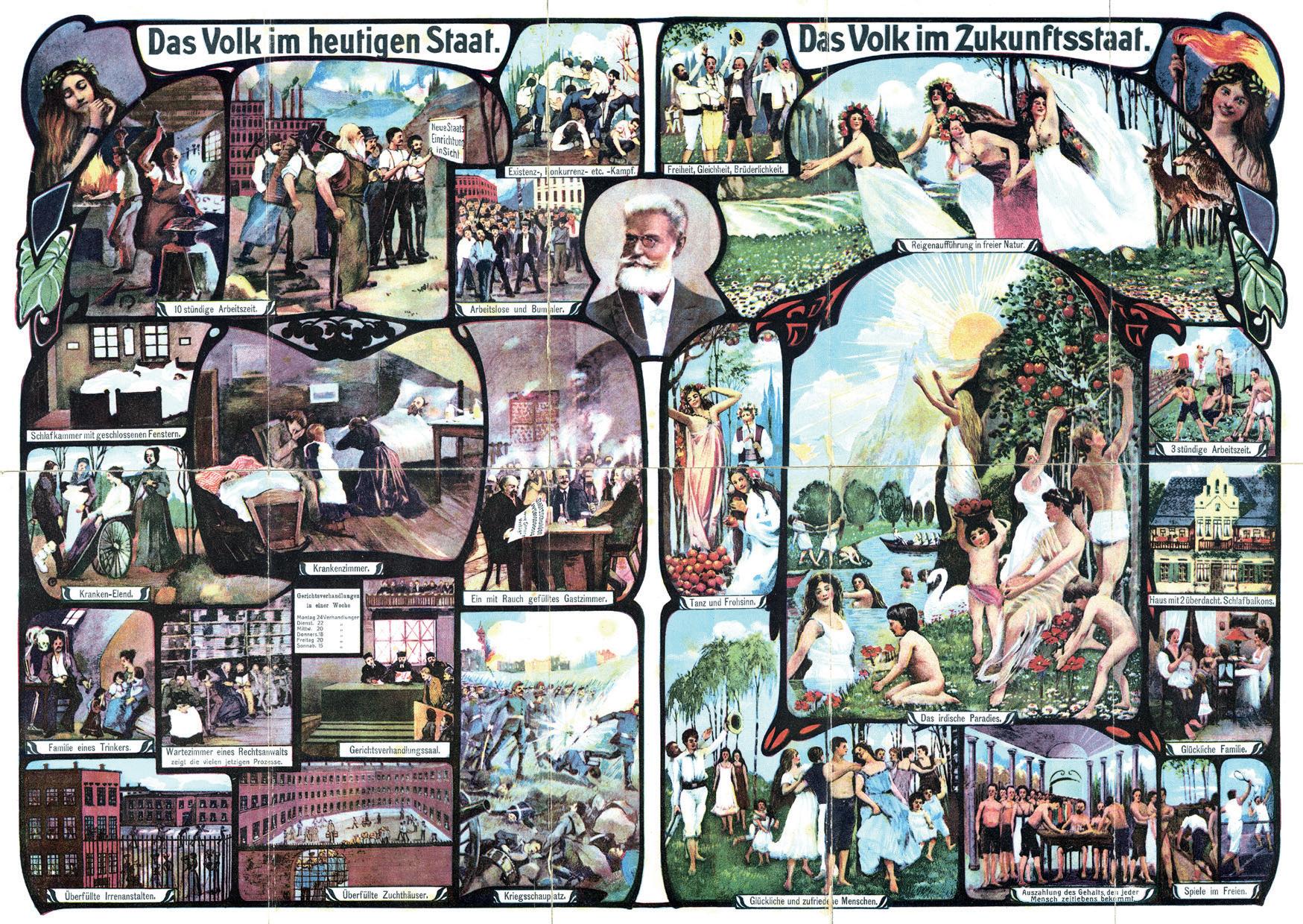
4 minute read
Echoes of the Lebensreform movement in the present day
Echoes of the Lebensreform movement in the present day Eva Locher
There are a number of things in our daily life which go back to the Lebensreform (Reform of Life) movement, without our realising it. What has survived of the Lebensreform move ment? What has happened to its ideas? And why is our attitude towards it so very ambivalent? Vegetarianism and veganism are popular today, many young people are keen to live in an ecologically sustainable way and regard the prevention of a climate catastrophe as a matter of urgency, it is impossible to imagine life now without alterna tive therapies and a good number of people hone their bodies tirelessly in fitness studios. But how many of us are aware that these concerns were already being talked about in the Lebensreform movement at the end of the 19th century? Healthy nutrition, natural therapies and the ideal of the body beautiful centred on health, nature and beauty, were part of the Lebensreform agenda, but over the course of the 20th century these practices and principles spread into society more generally. So the Lebensreform movement is a historical subject which directly impacts the present. Even today there are Reform associations in Switzerland, like the nudist association, the “Organisation of Naturists in Switzerland”, which has remained largely true to the principles laid down at the time it was founded in the 1920s. A few magazines originally published
Advertisement
by Lebensreform advocates continued to appear under new names - like “bisch zwäg” for example - until very recently. However, the concept of “Lebensreform” has gradually fallen into oblivion: practices similar to those preached by its proponents exist today but using new buzzwords like “mindfulness”, “connecting with nature”, “fitness” and “preventive health”. Nature is the most important Lebensreform concept. It is the guiding principle for a “natural” and “harmonious” way of life. As far back as the first half of the 20th century the proponents of Lebensreform were denouncing the “alienation of Man from Nature”, pointing out that the destruction of nature was depriving plants and animals as well as human beings of their means of existence and that environmental disaster lay ahead. That is why they were active in the nature conservation movement from the outset, and since the second half of the 20th century have worked very hard to achieve an environmentally friendly way of life. This includes not only the campaign against nuclear energy, but also the promotion of organic farming. Because of its early commitment to environmental protection the Lebensreform movement can also be seen as a forerunner of green alternative movements. It provided major inspiration to counter-cultural protagonists in the 1970s regarding an ecologically sustainable lifestyle. But at the same time, it was not only drop-outs on the left who found themes in it that attracted them. Reformists are more likely to use arguments of the ecological New Right, for example seeing population growth and migration as causes of environmental destruction. It is pre cisely when it comes to the ideal of nature that the Lebensreform movement proves to be hard to locate politically, able to act in partnership with conflicting sides. The overriding goal of the Lebensreform movement was good health – an ideal state of body, spirit and soul in “harmony with the laws of nature”. Living “according to nature” was supposed
to prevent, combat and cure disease. Many of the Lebensreform ideas and practices were directly or indirectly focused on the human body. By changing their diet, giving up “luxury foods and stimulants”, undergoing health treatments and taking part in sporting activities the movement’s proponents strove to achieve a healthy and beautiful body, something that naturism in particular idealised and glorified. The Lebensreform ideas of health and its concepts of the body were highly prescriptive. Reform magazines, books and courses informed supporters how they should organise their lives, and what ideals they should strive after, and instructed them to follow a narrow set of norms. And it was ideas about the best possible state of health and the ideal body which offered an opening to eugenic and racist notions. Countless proponents of Lebensreform propagated such ideas with the aim of achieving “higher development” and overcoming human “degeneration”. Such calls for “human enhancement” related not only to
the call for each individual to take responsibility for themselves, but also to larger scale entities, such as the “people”, for example. The Lebensreform movement thus helped to make broad sectors of the population receptive to eugenic ideas. Correct nutrition – as little as possible and as unadulterated as possible, vegetarian, no alcohol or nicotine – was one of the key elements of the Lebensreform movement. It denounced industrialised food production and mass consumerism. Vegetarian restaurants and Reformhaus health food shops appeared, specialising in specific products like whole grain cereals, soya products and natural cosmetics. At the same time, the Reformists’ dissociation from the conventional market, their inherent anti-consumerism and their encouragement to people to give up meat, alcohol and tobacco, created new consumer needs. The Reform goods industry subsequently provided its own capitalist consumer infrastructures, following the logic of the commercial market. So despite the anti-modernism ascribed to it, the Lebensreform movement should actually be seen as part of the modern age. Its methods of production and marketing and its consumption patterns have had an impact on the food market, where today there is a boom in organic products, glu ten-free items and wholesome foodstuffs.





